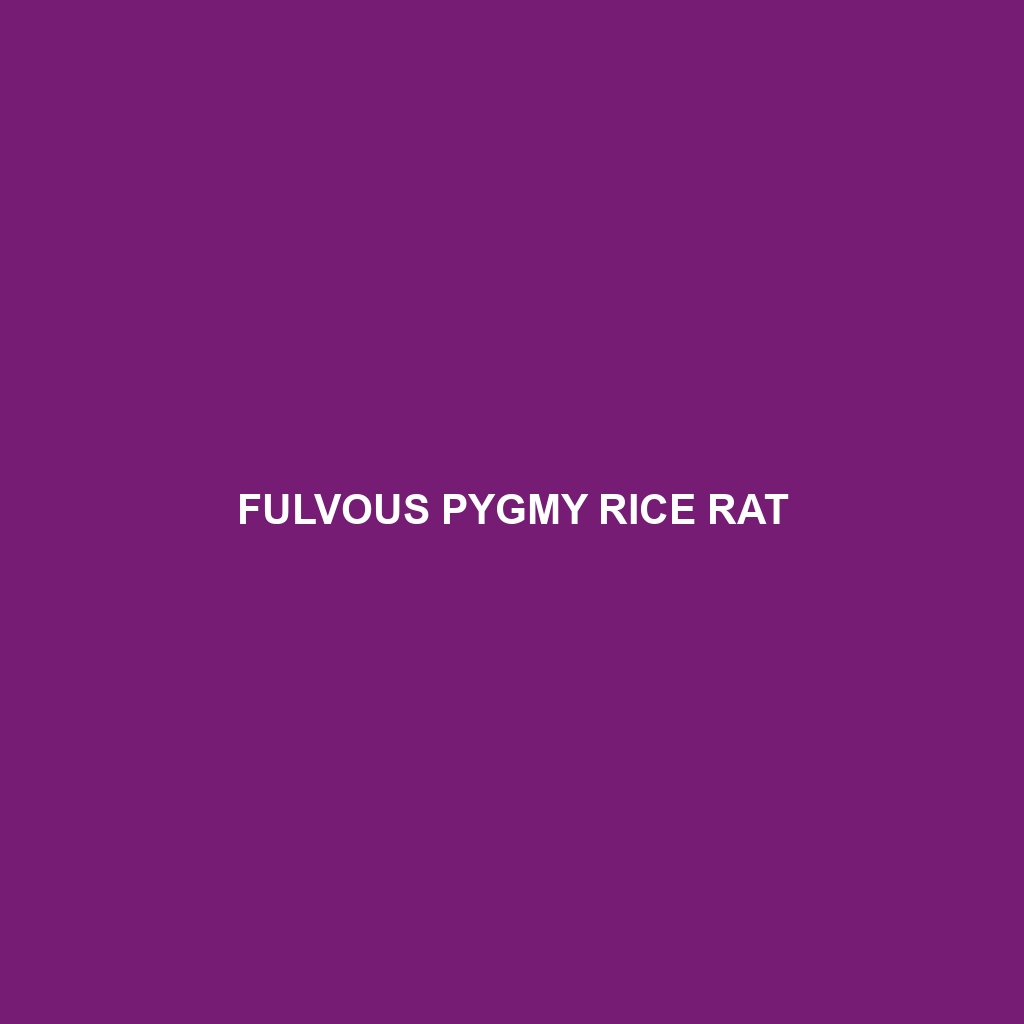Fulvous Pygmy Rice Rat: A Comprehensive Overview
Common Name: Fulvous Pygmy Rice Rat
Scientific Name: Oryzomys fulvescens
Habitat: The Fulvous Pygmy Rice Rat is primarily found in wetland habitats across Central America and the northern regions of South America, particularly in areas like Colombia and Venezuela. This species thrives in marshes, swamps, and reedy wetlands, where dense vegetation provides shelter and foraging opportunities. They are often located in rice fields, making them well-adapted to both natural and agricultural environments.
Physical Characteristics: This small rodent typically measures around 10 to 15 cm in body length, with a tail that can extend up to 12 cm long. Its fur is a distinctive fulvous-brown color, providing excellent camouflage among its natural habitat. Characterized by a slender body and large, rounded ears, the Fulvous Pygmy Rice Rat also has long, slender limbs and a pointed snout, which make it adept at navigating through dense reeds and foliage.
Behavior: The Fulvous Pygmy Rice Rat exhibits primarily nocturnal behaviors, being most active at night. During the day, they take refuge in burrows or dense cover to avoid predators. They are known for their agility and exceptional climbing skills, allowing them to forage for food both on the ground and in low vegetation. Socially, they tend to be solitary but can sometimes be found in small groups during feeding.
Diet: This species is omnivorous, with a diet that primarily consists of seeds, grains, and aquatic plants. They are particularly fond of rice, which is part of their name, as their habitats often overlap with rice cultivation. The Fulvous Pygmy Rice Rat plays an important role in seed dispersal, contributing to the health of its ecosystem.
Reproduction: The breeding season for the Fulvous Pygmy Rice Rat usually coincides with the wet season, when resources are abundant. Females typically give birth to 1 to 6 pups after a gestation period of about 30 days. Young are weaned at around three weeks and reach sexual maturity by two months. It is common for mothers to nest in dense shrubs or grass to protect their young from predation.
Conservation Status: Currently listed as “Least Concern”, the Fulvous Pygmy Rice Rat faces threats from habitat destruction due to agricultural expansion and pollution. Monitoring of their populations is essential to ensure their conservation status remains stable, as ongoing environmental changes may impact their habitats and food sources.
Interesting Facts: One fascinating aspect of the Fulvous Pygmy Rice Rat is its ability to swim, which allows it to easily navigate wetland environments and evade predators. Additionally, they have a unique vocalization system, using a series of chirps and squeaks to communicate with other rats.
Role in Ecosystem: The Fulvous Pygmy Rice Rat serves as a key species in its ecosystem, aiding in seed dispersal and providing a food source for various predators, including birds of prey and snakes. Their foraging habits help maintain the ecological balance within their wetland habitats, emphasizing their importance in sustaining healthy ecosystems.
